Cartoon Set 1: Trials and Execution
Cartoon Set 2: First Violence
Cartoon Set 3: Last Battle & Surrender
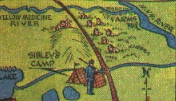
The morning of Sept. 23, 1862, found Col. Henry H Sibley and 1,600 soldiers camped near Wood Lake. Less than a mile away were Chief Little Crow and 700 Sioux, waiting to ambush Sibley's army.
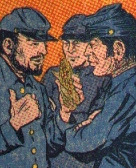
The Third Minnesota infantry regiment troops, recently added to Sibley's force, were a bitter, unruly lot. They'd been surrendered to the Confederates by their officers at Murfreesboro. The South then freed the regiment to go north and fight the Indians.
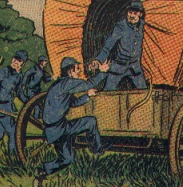
Hoping to find fresh potatoes and corn, a dozen men from the third slipped out of camp on a foraging trip. The headed for the farms of the Upper Indian agency, just three miles away.

They unexpectedly met the Indians waiting in ambush. The braves had no choice but to open fire -- and the famous battle of Wood Lake was on.
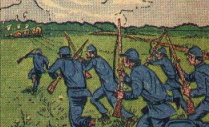
The Third regiment, alerted by the gunfire, rushed to the rescue. Under Major Abraham Welch they quickly routed one Indian force. But they were forced to fight their way back to camp as more Indians poured in.
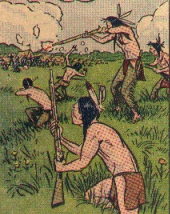
The Indians then charged Sibley's camp. But the soldiers were fighting from a fortified position, were better equipped and greatly outnumbered the Sioux.
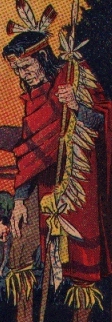
Half of Little Crow's army didn't take part in the attack. The braves were spread out along the road when the ambush misfired. The battle lasted little more than two hours. About 30 braves were killed, but only 7 soldiers. The uprising was over and Little Crow's power was gone.
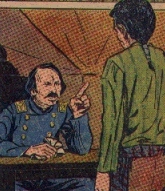
Soon a half breed named Campbell came to Sibley with a message that the Sioux desired peace. Sibley's answer was brief; Only after the white women and children held prisoner were delivered to him would he talk peace!
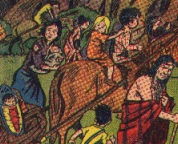
While the warriors were at Wood lake a few friendly Indians gathered most of the prisoners in a camp across the river from what is now Montevideo. Chief Wabasha moved his people to the same area after the battle and sent a message telling Sibley of the location.
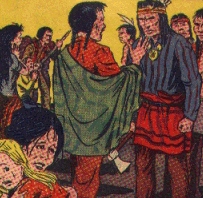
The next day, Little Crow with about 100 braves escaped into the Dakotas. Before leaving he demanded that all the prisoner be killed. But his influence was gone. Wabasha insisted the prisoners be spared so that those Indians who remained might receive better treatment.
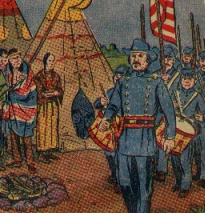
Sibley marched his army up, first holding a dress parade near the Hazelwood mission to impress in Indians. Then he advanced to the Indian camp. It was soon renamed Camp Release.

The Indians made speeches disclaiming any part in the murder of whites. Then they released their prisoners. Altogether, 269 prisoners, mostly women, were delivered to Sibley at Camp Release on Sept. 26.

Now began the last phase of Sibley's campaign -- the punishment of the Sioux. While some Indians had fled, many remained in the area. They preferred to face the white man's wrath rather than winter on the Dakota plains. Sibley began to round them up to learn who were guilty of taking part in the uprising.